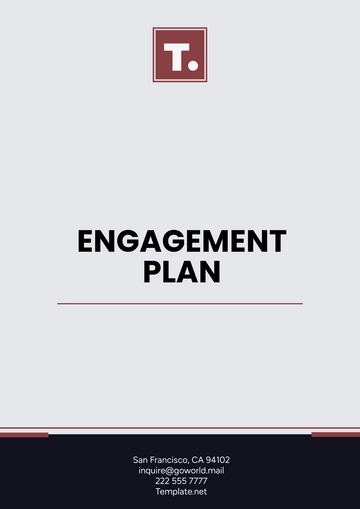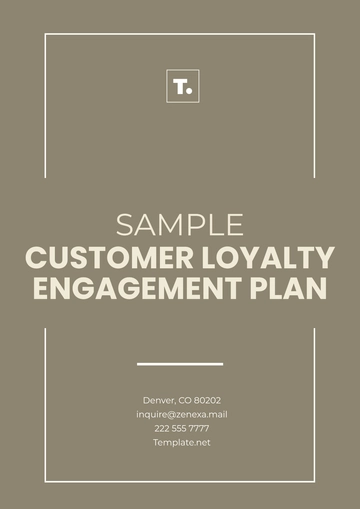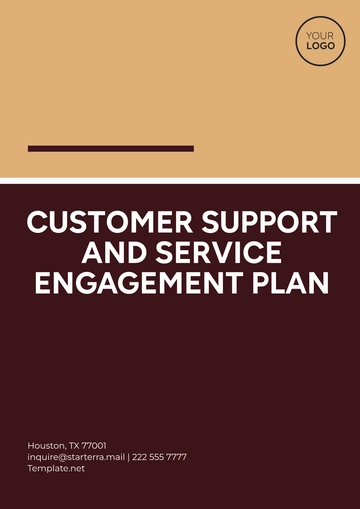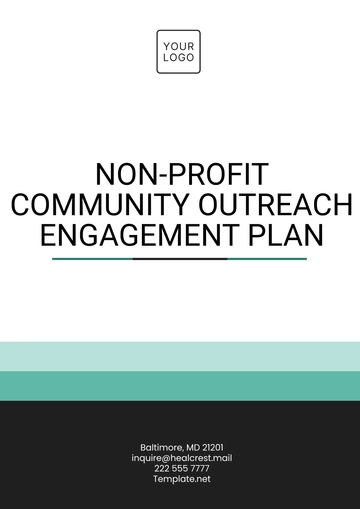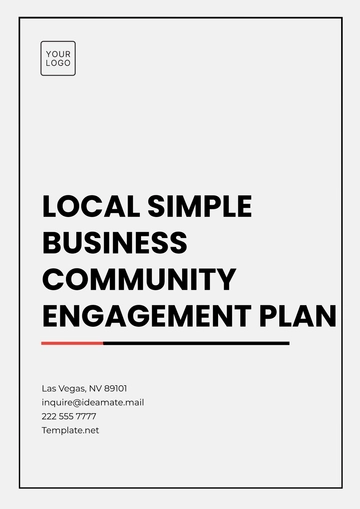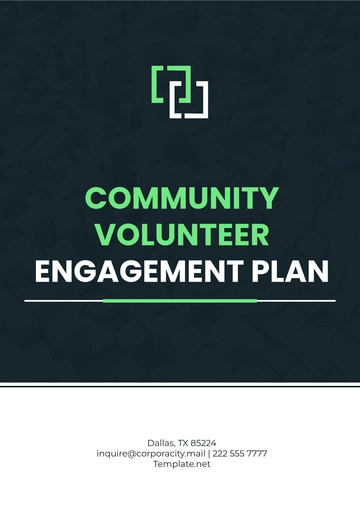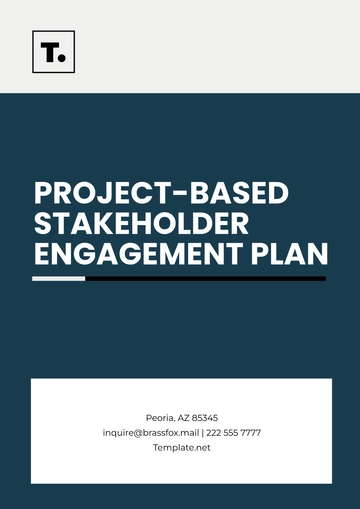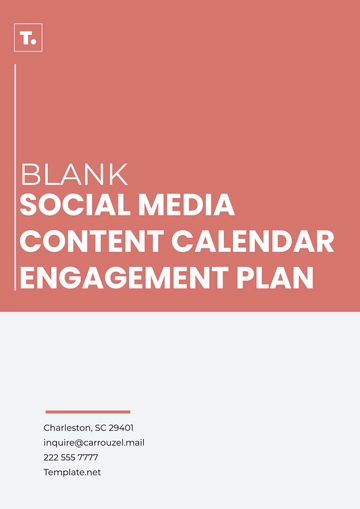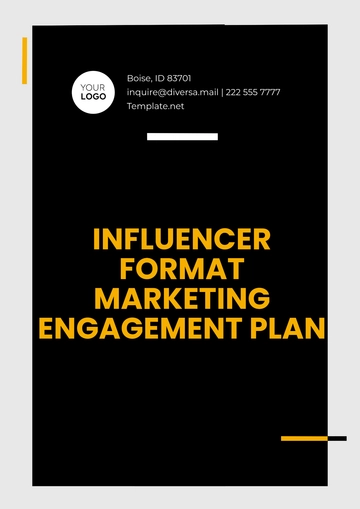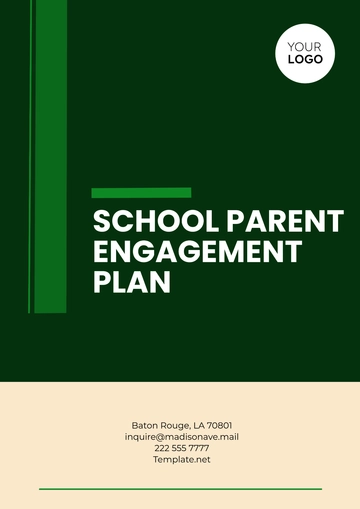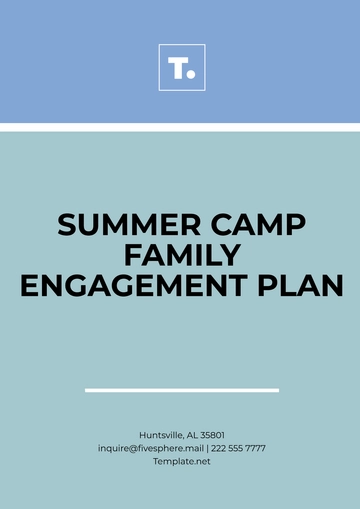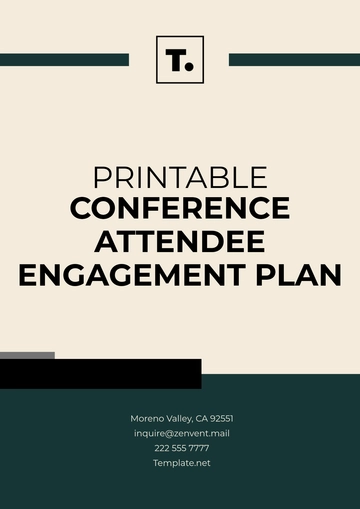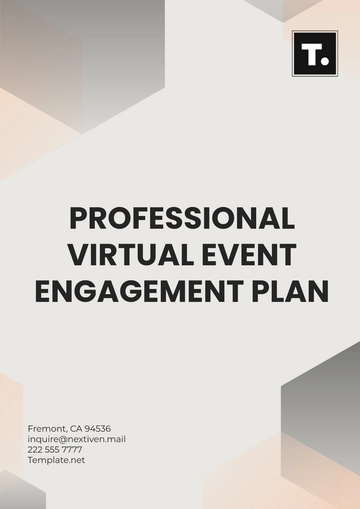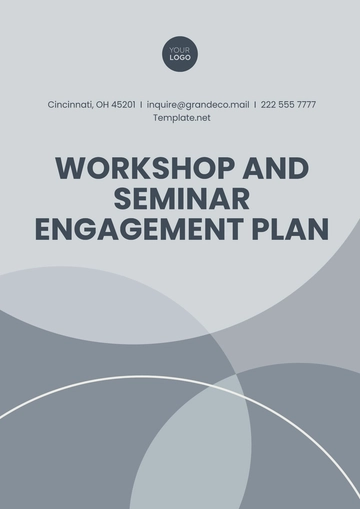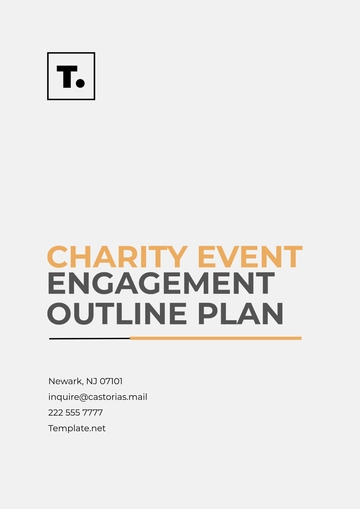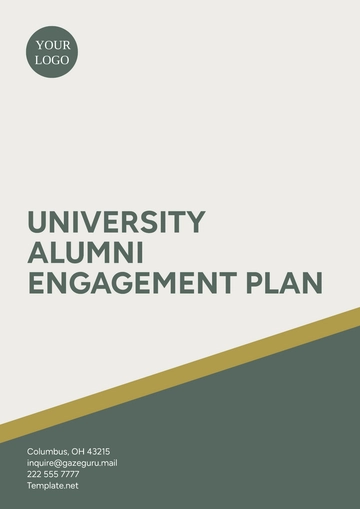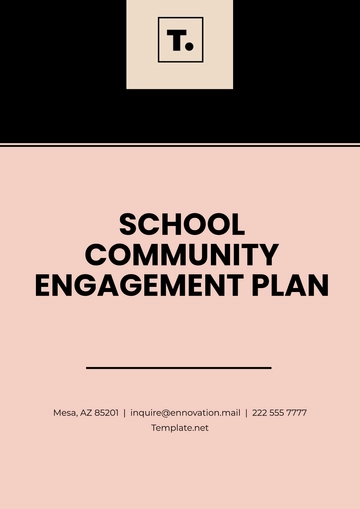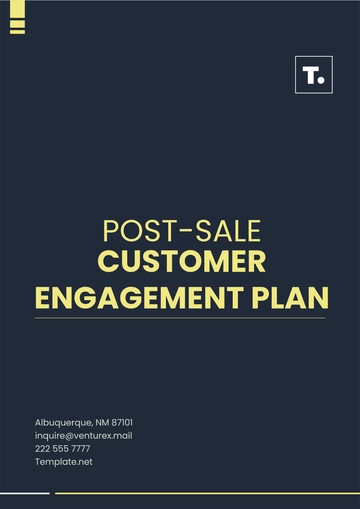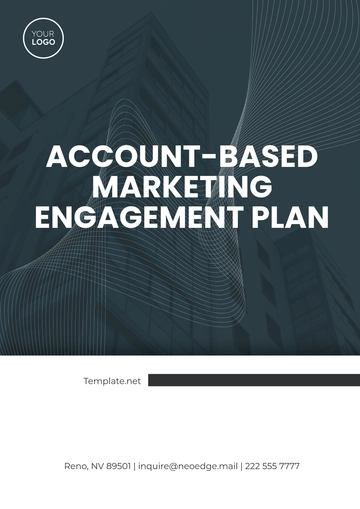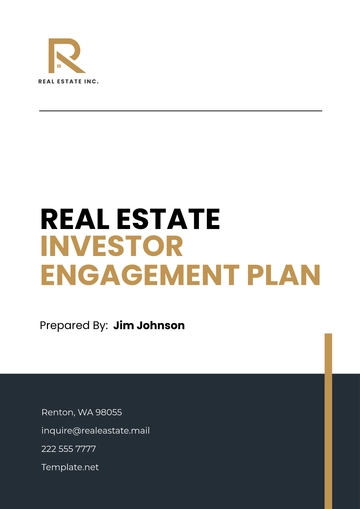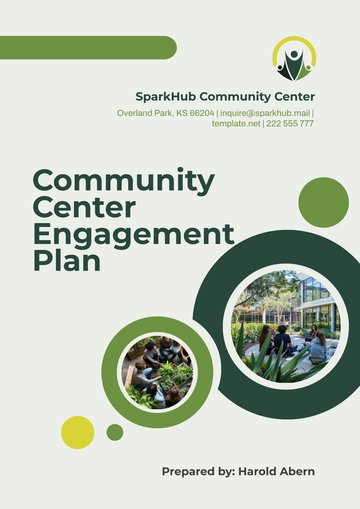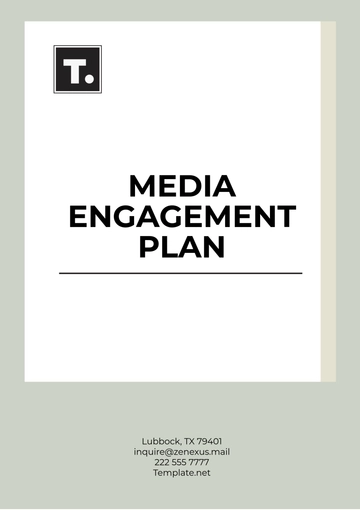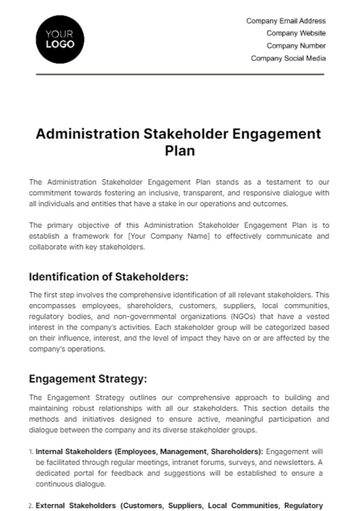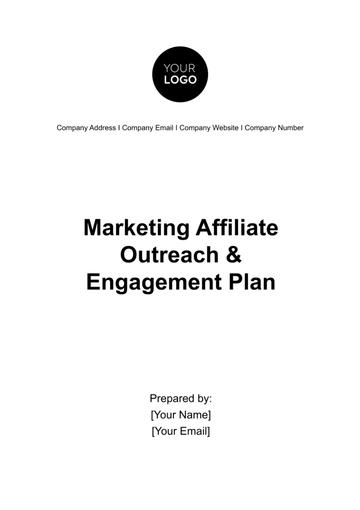Free Community Center Engagement Plan
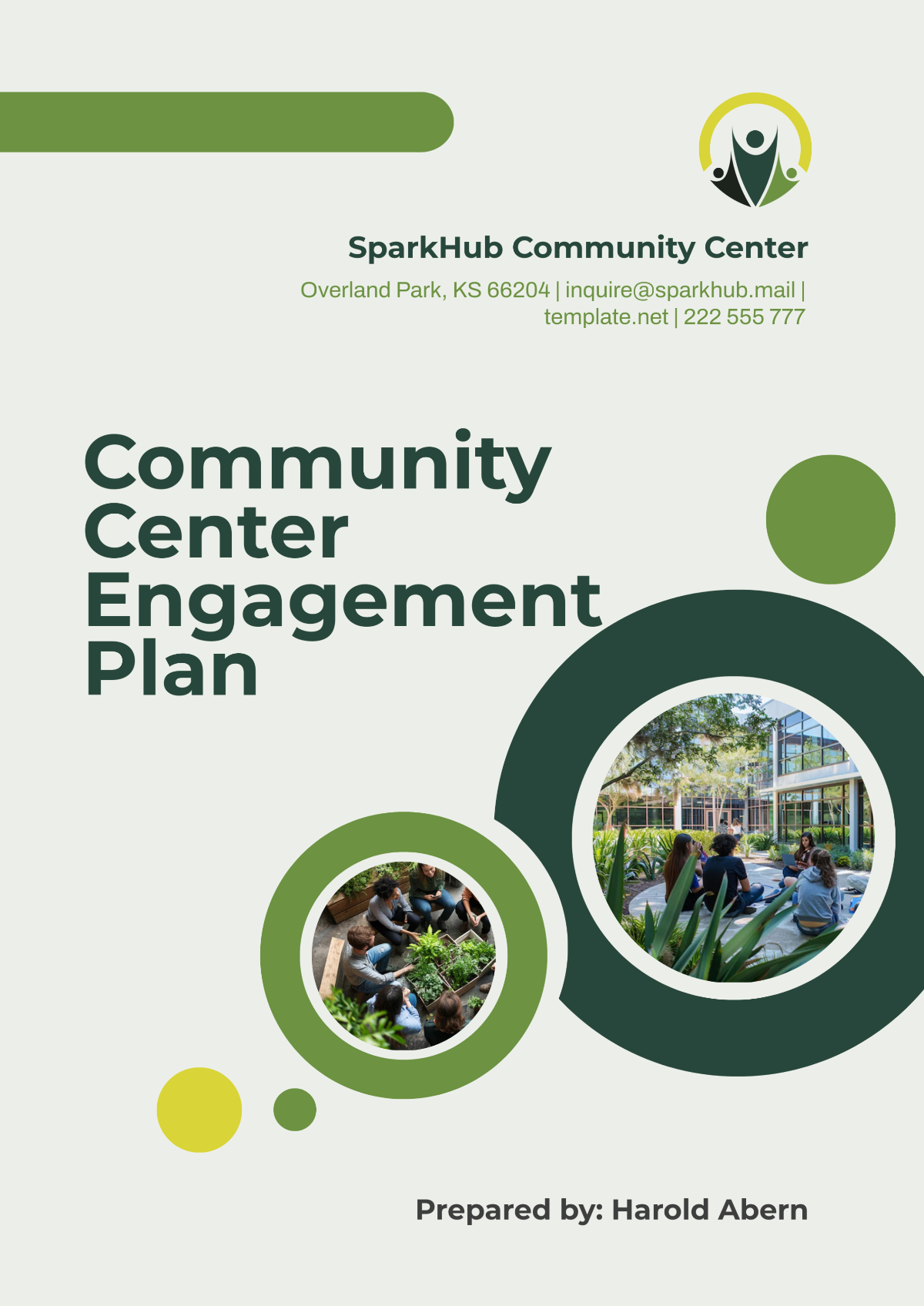
I. Introduction
A. Purpose of the Engagement Plan
The purpose of this Community Center Engagement Plan is to develop and implement strategies that foster deeper involvement from the local community. This plan aims to enhance participation in center activities, improve communication with residents, and ensure that the center meets the needs of all its diverse groups.
B. Overview of the Community Center
The [Your Company Name] has been a vital hub for community activities for over 20 years, offering programs ranging from fitness classes to arts workshops. Located in the heart of [City], the center serves a wide range of residents, including families, seniors, and young adults.
C. Vision and Mission of the Center
Vision
To build a stronger, more connected community where all individuals have access to resources, programs, and opportunities to thrive.
Mission
To provide a welcoming, inclusive environment where residents can engage in meaningful programs, strengthen relationships, and support one another.
D. Importance of Community Engagement
Community engagement is essential for building trust, improving participation, and ensuring that the programs offered meet the diverse needs of the local population. A proactive engagement plan will help the center adapt to changes in the community and respond to emerging needs.
II. Goals and Objectives
A. Define Key Engagement Goals
Increase participation in community programs by 30% over the next 12 months.
Strengthen relationships between the center and local businesses, schools, and other organizations.
Cultivate an inclusive environment that reflects the diversity of the community.
B. Short-Term Objectives (6-12 months)
Launch a social media campaign to promote programs and services.
Host at least three community forums to gather feedback and ideas for future programming.
Increase volunteer involvement by 20%.
C. Long-Term Objectives (1-3 years)
Develop long-term partnerships with local businesses and schools to provide sponsorships or joint programming.
Expand the center’s outreach to underserved communities, including low-income families and people with disabilities.
Launch a community ambassador program to support and lead local engagement efforts.
III. Target Audience
A. Demographics of the Community
Age Groups: Youth (6-17), Adults (18-65), Seniors (65+)
Cultural Diversity: The community is made up of a mix of ethnic groups, including [Ethnicity A], [Ethnicity B], and [Ethnicity C].
Socioeconomic Background: The area includes both middle-income families and lower-income households.
B. Key Stakeholders
Local Residents: Families, youth, seniors, and individuals seeking recreation or community support.
Local Businesses: Small business owners who are invested in local events and community development.
Schools and Youth Organizations: Educational institutions and after-school programs that can benefit from partnerships for youth programming.
Religious Institutions and Community Groups: Churches, mosques, and other faith-based organizations providing services to the community.
C. Special Focus Groups
Underserved Populations: Programs and outreach efforts will prioritize low-income families and individuals who may have limited access to resources.
Marginalized Communities: Efforts will also focus on engaging people with disabilities, LGBTQ+ individuals, and other underrepresented groups.
IV. Community Needs Assessment
A. Methods of Data Collection
To gather a comprehensive understanding of community needs, we will utilize multiple methods of data collection, including digital surveys sent via email and social media, ensuring wide accessibility. In addition, we will hold focus groups with various community members—such as parents, seniors, and youth—to gain detailed insights into specific needs. Lastly, we will conduct one-on-one interviews with local stakeholders, such as business owners and school leaders, to gain qualitative input on potential partnerships and resource gaps.
B. Key Findings
Early surveys have revealed a strong interest in more family-oriented events, such as outdoor movie nights and parent-child workshops, to foster community bonding. Many residents have expressed concerns about the affordability and accessibility of programs, suggesting that pricing and transportation are significant barriers. Additionally, the survey results indicated that seniors are seeking more low-impact fitness classes, and young adults are interested in skill-building workshops like coding and job readiness programs.
C. Analysis of Current Engagement Levels
Current engagement levels show that adult participation is higher than that of youth or senior residents, indicating a need for more youth-focused and senior-inclusive activities. Our past events have been well-received by those who attended, yet we notice that certain groups—such as low-income families—are underrepresented, possibly due to financial or logistical barriers. We will address these gaps by offering sliding scale fees and enhancing transportation options to make programs more accessible.
V. Engagement Strategies
A. Program Development
The development of programs will focus on creating a balance of recreational, educational, and wellness activities that cater to a wide range of community interests. We plan to offer art workshops and sports leagues for families, while also expanding wellness offerings such as yoga and fitness classes tailored to seniors. Furthermore, we will create youth-focused initiatives such as mentorship programs, coding workshops, and leadership development activities to provide skills and build confidence.
B. Communication and Outreach
A multi-channel communication approach will be used to engage with community members, utilizing social media platforms like Facebook and Instagram to reach younger audiences, while also leveraging email newsletters and local bulletin boards for older generations. Flyers will be distributed to local schools, coffee shops, and libraries to ensure community members without internet access stay informed. Community meetings and town halls will be held quarterly to maintain open dialogue and collect feedback directly from residents.
C. Partnerships and Collaborations
Strategic partnerships with local schools will allow for after-school programs and shared resources, fostering stronger connections between the center and youth groups. Collaboration with local businesses will include sponsorships and joint events, creating opportunities for mutual growth and support. Additionally, working with non-profit organizations will enable us to expand our reach, especially for underserved populations, and allow for shared initiatives, such as food drives or health and wellness fairs.
D. Volunteer and Ambassador Programs
We will recruit and train volunteers from within the community to assist with program facilitation, event organization, and outreach efforts, creating a sense of ownership and engagement. Volunteers will be equipped with resources and training to engage with various community groups, from children to seniors, ensuring that everyone feels welcomed and supported. The ambassador program will empower dedicated residents to promote the center’s offerings, acting as the voice of the community and encouraging their peers to participate.
VI. Communication Plan
A. Communication Channels
Our primary communication channels will include a well-maintained website, which will serve as a central hub for all event details, program registration, and community updates. Social media platforms will be used to engage with the broader community, post real-time updates, and promote events through visually appealing content. Additionally, traditional communication methods, such as flyers, posters, and local radio ads, will ensure we reach residents who may not be digitally connected.
B. Messaging Strategies
Messaging will be clear, concise, and consistent, ensuring that all community members—regardless of age or background—can easily understand and access information. Tailored messages will be developed to speak directly to the needs of different demographic groups, from seniors interested in health programs to families looking for recreational activities. We will also include personal stories and testimonials from community members to humanize our messaging and build a deeper connection with the audience.
C. Timing and Frequency
To maintain consistent communication, we will release weekly updates on social media and send monthly email newsletters that highlight upcoming events, new programs, and important announcements. Special campaigns or event reminders will be sent out a week before the event, ensuring that people have ample time to make plans. Additionally, seasonal campaigns will be launched, such as a summer family activities guide or back-to-school initiatives, to keep the community engaged year-round.
VII. Feedback and Evaluation
A. Mechanisms for Gathering Feedback
We will gather feedback through post-event surveys, which will allow participants to rate their experience and provide suggestions for improvement. Suggestion boxes will be placed in high-traffic areas of the center to ensure that community members can share their thoughts anonymously. Furthermore, informal feedback will be collected during events and through social media, where we can directly engage with participants to address concerns and ideas in real-time.
B. Measuring Success
The success of our engagement efforts will be measured by tracking participation rates in each program and event, noting trends in attendance and any barriers that may arise. Satisfaction will be assessed through surveys that include questions about program quality, accessibility, and overall experience, helping us identify areas for improvement. Additionally, the strength of our partnerships and volunteer engagement will be evaluated, as these relationships are crucial for the sustainability of our programs.
C. Adjustments and Improvements
Based on the feedback collected, we will make data-driven adjustments to programs to enhance their appeal and effectiveness. If certain programs are not meeting expectations, we will revise the format, schedule, or content to better align with community interests. We will also address logistical challenges, such as improving transportation or offering more flexible pricing structures to ensure that our offerings are accessible to all.
VIII. Timeline and Milestones
A. Short-Term (0-6 months)
In the first six months, we will focus on launching a targeted social media campaign and distributing a community-wide survey to gather initial input. We will also host at least three community forums to introduce new programs and gather feedback from residents. By the end of this period, we aim to establish relationships with at least two local schools and two businesses to build initial partnerships.
B. Medium-Term (6-12 months)
After analyzing the feedback from the first six months, we will begin adjusting programming to better meet community needs. Additionally, we will expand outreach efforts, increasing volunteer participation by 20% and enhancing our communication through local media. At the 12-month mark, we will assess the success of the ambassador program and adjust the training to empower volunteers to take on more leadership roles.
C. Long-Term (1-3 years)
Over the next three years, we aim to develop long-term strategic partnerships with local businesses and schools to sustain programming and create ongoing funding opportunities. We will also introduce new programs based on emerging community needs, such as career development workshops for young adults. Additionally, we will work to secure external funding through grants and sponsorships to support larger-scale community events and initiatives.
IX. Budget and Resources
A. Financial Resources Needed
The budget for this engagement plan will cover the costs of program supplies, staff salaries, event logistics, and marketing materials. We will seek funding from a variety of sources, including grants, donations, and partnerships with local businesses. A detailed budget will be developed to ensure that all activities remain financially sustainable while meeting the community's needs.
B. Staffing and Volunteer Resources
Staffing will include dedicated program coordinators to oversee daily operations and volunteer recruitment. We will also hire community outreach specialists to manage communications and partnerships, ensuring effective engagement with all stakeholders. Volunteers will be key to the success of the plan, and a volunteer coordinator will be responsible for recruitment, training, and retention efforts.
C. Material Resources
Materials for programs will include fitness equipment, art supplies, and educational resources tailored to specific activities. Additionally, technology needs will be addressed through the purchase of event management software to streamline registrations and communications. We will also ensure that our physical space is equipped to accommodate a wide range of activities, from fitness classes to community meetings.
X. Sustainability and Long-Term Engagement
A. Ongoing Community Involvement
To maintain long-term engagement, we will actively involve community members in program planning and decision-making through advisory boards and focus groups. Encouraging continued participation in volunteer opportunities and leadership roles will help foster a sense of ownership and responsibility. This ongoing involvement will ensure that the center evolves alongside the community’s changing needs.
B. Continual Funding and Support
We will seek long-term funding through diverse sources, including government grants, private donations, and sponsorships from local businesses. Fundraising events and campaigns will be launched regularly to generate additional resources. Additionally, partnerships with local organizations will help share costs and responsibilities, ensuring financial sustainability for the future.
C. Evolving Programs Based on Changing Needs
Programs will be regularly reviewed and adapted to meet emerging community trends and challenges, such as changes in demographics or new health and wellness concerns. We will continually assess community feedback and stay informed about local issues, using this data to evolve programming. This approach will ensure that the center remains relevant and responsive to the evolving needs of the community for years to come.
XI. Conclusion
A. Summary of Key Points
The Community Center Engagement Plan is designed to foster a more inclusive, connected, and vibrant community by creating diverse programs and opportunities for participation. Through a combination of outreach strategies, community partnerships, and continual feedback, the center will evolve to meet the changing needs of its residents, ensuring that it remains a central hub for engagement.
B. Reaffirmation of Commitment
We are dedicated to making the community center a welcoming place where all residents, regardless of background, feel valued and empowered to engage in meaningful activities. Our commitment to transparency, inclusivity, and collaboration will guide every decision as we work together to strengthen our community.
C. Call to Action
We encourage all community members to get involved, whether by participating in programs, volunteering, or sharing their ideas and feedback. Together, we can build a thriving and supportive community center that meets the needs of everyone who calls this community home.
- 100% Customizable, free editor
- Access 1 Million+ Templates, photo’s & graphics
- Download or share as a template
- Click and replace photos, graphics, text, backgrounds
- Resize, crop, AI write & more
- Access advanced editor
The Community Center Engagement Plan Template from Template.net is a fully editable and customizable solution designed to help you create an impactful community engagement strategy. With our user-friendly AI Editor Tool, you can effortlessly tailor each section to suit your specific needs, ensuring a plan that aligns with your goals. Start engaging your community today!
You may also like
- Finance Plan
- Construction Plan
- Sales Plan
- Development Plan
- Career Plan
- Budget Plan
- HR Plan
- Education Plan
- Transition Plan
- Work Plan
- Training Plan
- Communication Plan
- Operation Plan
- Health And Safety Plan
- Strategy Plan
- Professional Development Plan
- Advertising Plan
- Risk Management Plan
- Restaurant Plan
- School Plan
- Nursing Home Patient Care Plan
- Nursing Care Plan
- Plan Event
- Startup Plan
- Social Media Plan
- Staffing Plan
- Annual Plan
- Content Plan
- Payment Plan
- Implementation Plan
- Hotel Plan
- Workout Plan
- Accounting Plan
- Campaign Plan
- Essay Plan
- 30 60 90 Day Plan
- Research Plan
- Recruitment Plan
- 90 Day Plan
- Quarterly Plan
- Emergency Plan
- 5 Year Plan
- Gym Plan
- Personal Plan
- IT and Software Plan
- Treatment Plan
- Real Estate Plan
- Law Firm Plan
- Healthcare Plan
- Improvement Plan
- Media Plan
- 5 Year Business Plan
- Learning Plan
- Marketing Campaign Plan
- Travel Agency Plan
- Cleaning Services Plan
- Interior Design Plan
- Performance Plan
- PR Plan
- Birth Plan
- Life Plan
- SEO Plan
- Disaster Recovery Plan
- Continuity Plan
- Launch Plan
- Legal Plan
- Behavior Plan
- Performance Improvement Plan
- Salon Plan
- Security Plan
- Security Management Plan
- Employee Development Plan
- Quality Plan
- Service Improvement Plan
- Growth Plan
- Incident Response Plan
- Basketball Plan
- Emergency Action Plan
- Product Launch Plan
- Spa Plan
- Employee Training Plan
- Data Analysis Plan
- Employee Action Plan
- Territory Plan
- Audit Plan
- Classroom Plan
- Activity Plan
- Parenting Plan
- Care Plan
- Project Execution Plan
- Exercise Plan
- Internship Plan
- Software Development Plan
- Continuous Improvement Plan
- Leave Plan
- 90 Day Sales Plan
- Advertising Agency Plan
- Employee Transition Plan
- Smart Action Plan
- Workplace Safety Plan
- Behavior Change Plan
- Contingency Plan
- Continuity of Operations Plan
- Health Plan
- Quality Control Plan
- Self Plan
- Sports Development Plan
- Change Management Plan
- Ecommerce Plan
- Personal Financial Plan
- Process Improvement Plan
- 30-60-90 Day Sales Plan
- Crisis Management Plan
- Engagement Plan
- Execution Plan
- Pandemic Plan
- Quality Assurance Plan
- Service Continuity Plan
- Agile Project Plan
- Fundraising Plan
- Job Transition Plan
- Asset Maintenance Plan
- Maintenance Plan
- Software Test Plan
- Staff Training and Development Plan
- 3 Year Plan
- Brand Activation Plan
- Release Plan
- Resource Plan
- Risk Mitigation Plan
- Teacher Plan
- 30 60 90 Day Plan for New Manager
- Food Safety Plan
- Food Truck Plan
- Hiring Plan
- Quality Management Plan
- Wellness Plan
- Behavior Intervention Plan
- Bonus Plan
- Investment Plan
- Maternity Leave Plan
- Pandemic Response Plan
- Succession Planning
- Coaching Plan
- Configuration Management Plan
- Remote Work Plan
- Self Care Plan
- Teaching Plan
- 100-Day Plan
- HACCP Plan
- Student Plan
- Sustainability Plan
- 30 60 90 Day Plan for Interview
- Access Plan
- Site Specific Safety Plan
